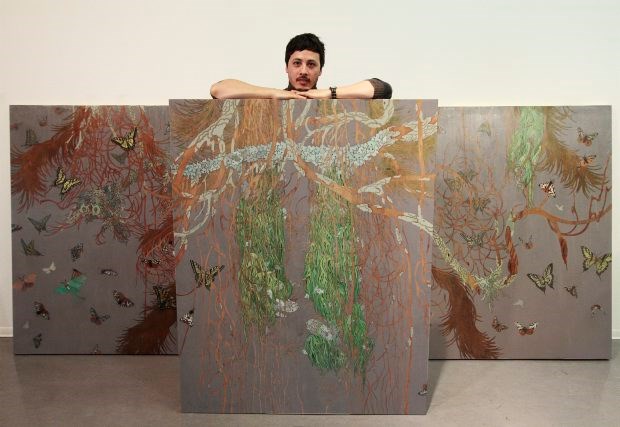PREVIEW
Rick Leong's The
Phenomenology of Dusk
When: Friday through Aug. 6
Where: LAB Gallery at the Art Gallery of Greater Victoria
Tickets: Regular gallery admission ($13 regular, $11 seniors/students, $2.50 youth, $28 family, free for members and children)
Collecting mental images of lichen, mushrooms and moths is standard practice for artist Rick Leong.
"As a landscape painter, I'm always looking. It's part of my language, part of my vocabulary," he said. "Wherever I am, I'm paying particular attention to the landscape for those sorts of opportunities to expand my vocabulary and inject something new into my language."
Leong's solo exhibition, The Phenomenology of Dusk, opens Friday at the Art Gallery of Greater Victoria. It will be his first solo exhibition at a public gallery in Canada, although he drew national attention as a finalist in the 2008 RBC Canadian Painting Competition and his work is part of the National Gallery of Canada's collection.
There's nothing stereotypical about the Victoriabased artist's landscapes - no horizon line or seascapes. Instead, he gathers his memories into a critical mass, to create a new form.
"[I] utilize the landscape to talk about other things that I'm interested in, such as philosophy or ecology or any number of things," he said. In the case of most of the pieces in The Phenomenology of Dusk, the focus is on his fascination with the in-between: the meeting space of night and day, body and mind, awake and dreaming.
As with objects at dusk, there's a familiarity in each piece, but it's fleeting.
Landscapes seem a natural evolution for Leong, who began drawing them in the master of fine arts program at Concordia University in Montreal.
He says he moved around the Lower Mainland a lot as a kid, absorbing different environments. As a third-generation ChineseCanadian, he focused on identity politics in his undergraduate work at the University of Victoria.
"I never had a sense of history or a sense of belonging to a place," he said. "That's one of the reasons I'm fascinated in not really belonging to either realm, or not being in either place, always being transient, always between worlds."
In triptych Hypnagogia (a word for the transitional stage of falling asleep), a tangle of rootlike tree branches hangs from the centre panel.
Lichen climbs across some of the branches and curls into the shape of two nesting bats. Butterflies and moths fly together in chaos toward the edges of the canvas.
Each figure, though recognizable, is not an exact copy of the creatures and landscape elements he photographs.
Leong carefully studies the forms and practises drawing them from photos. But when it comes time to make the work, he creates distance, working from memory. "It's not so much a document of the places I've been, so much as document of how I experienced them and how I've internalized them and what I take away from those places."
There's symbolism in his pieces, if you look for it. The butterflies, for example, aren't only the Western symbol of transformation, but point to a Daoist fable about a priest who dreamed he was a butterfly. "The dream is so real that when he awoke, he wasn't sure if he was a man who dreamed that he was a butterfly or if he was a butterfly who dreamed he was a man," he said. "It's a story to draw attention to that state of questioning about not knowing what is real."



